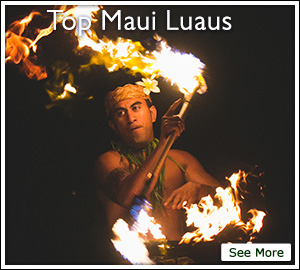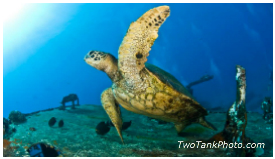 While it’s hard not to imagine Maui as a picture-perfect island constantly glittered by rainbows and sunshine, residents still battle with their share of environmental issues. Although some of these issues are a concern for more than just the residents of Hawaii, some issues are specific in nature to this beautiful island, which volunteers and environmental organizations are working hard to preserve.
While it’s hard not to imagine Maui as a picture-perfect island constantly glittered by rainbows and sunshine, residents still battle with their share of environmental issues. Although some of these issues are a concern for more than just the residents of Hawaii, some issues are specific in nature to this beautiful island, which volunteers and environmental organizations are working hard to preserve.
Top Environmental Issues:
Renewable Energy
The state of Hawaii announced the Clean Energy Initiative in 2008, which calls for 70% of Hawaii’s energy to come from wind power, solar energy, geothermal, hydropower, and biomass energy by the year 2030. By law, no new coal plants can be opened, and as of 2011, Maui Electric Company was set to partner with Hawaiian Electric Company, Alexander & Baldwin, Inc. and HR BioPetroleum to pursue a commercial-scale microalgae facility that would “produce lipid oil for conversion to biodeisel and other products, such as animal feed.”
According to Maui Electric, one of the biggest issues with renewable energy is the inconsistent availability of resources on each of the islands. While Oahu is the most populated island, it is also somewhat limited in sites and available resources for new energy systems. Since it’s not currently possible to move electricity between islands, this challenge will be have to be individualized according to what each island can provide.
As of January 2013, a public notice was posted for Maui Renewable Energy Projects, which called for specific proposals from individuals or companies for use of up to 500 acres in Kahikinui, Pulehunui and Honokowai for renewable energy. While the deadline for proposals has already passed, it’s never too late to get involved in renewable energy practices on Maui. Check out South Maui Sustainability for more information.
Wastewater Disposal
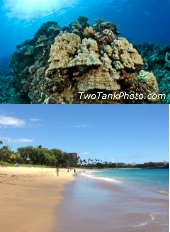 Rob Parsons, environmental coordinator for Mayor Arakawa, identified wastewater disposal as one of Maui’s biggest environmental issues of 2011. On a daily basis, 3 to 5 million gallons of wastewater are dumped into the ground through injection wells at a facility in Lahaina.
Rob Parsons, environmental coordinator for Mayor Arakawa, identified wastewater disposal as one of Maui’s biggest environmental issues of 2011. On a daily basis, 3 to 5 million gallons of wastewater are dumped into the ground through injection wells at a facility in Lahaina.
Ultimately, this causes wastewater to end up in the ocean, which is a major concern for marine life, including fragile coral reef and more than 7,000 marine life forms, a quarter of which are found nowhere else on Earth. It was also determined that the discharged wastewater contains levels of bacteria that could violate standards of the federal Safe Drinking Water Act, which is why four different Hawaii community groups sued Maui County in 2012 in order to secure a National Pollutant Discharge Elimination System to set limits on pollutants discharged from injection wells in Lahaina.
The U.S. Environmental Protection Agency has ordered that the injected wastewater not exceed the highest quality of reclaimed water level for fecal coliform by January 1st, 2014. If you want to learn more or are interested in working to solve this problem, take a look at the Wastewater Community Working Group of Maui.
Humpback Whale Education & Protection
 Every Winter, thousands of whales flock to the shallow waters around Maui. This is a wonderful thing for most residents and visitors, who get the chance to witness these amazing creatures from the shore, a boat, kayak, stand up paddle board, or helicopter.
Every Winter, thousands of whales flock to the shallow waters around Maui. This is a wonderful thing for most residents and visitors, who get the chance to witness these amazing creatures from the shore, a boat, kayak, stand up paddle board, or helicopter.
The problem is that some companies claim to be non profit and have “certified experts and naturalists” after taking only a couple of classes on the subject of whales. If you’re considering taking a whale watching tour on the island, make sure you choose a company that has dedicated years to the research, protection and knowledge about these fascinating animals, such as Maui Adventure Cruises, who is a sponsor of the well-respected Hawaii Whale Research Foundation.
Cane Burning
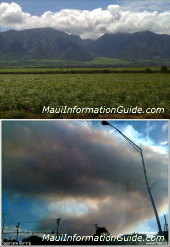 Another huge issue on Maui is the burning of sugarcane by Hawaiian Commercial & Sugar, which operates three coal-fired burners and causes air pollution and falling ash, not to mention a terrible odor, throughout the island.
Another huge issue on Maui is the burning of sugarcane by Hawaiian Commercial & Sugar, which operates three coal-fired burners and causes air pollution and falling ash, not to mention a terrible odor, throughout the island.
Sugarcane burning happens daily on Maui for nine months out of the year and is done in order to process sugar, which HC&S insists is the only way to do this, mainly because it is cheaper than harvesting it without burning. While Maui residents have been struggling with this issue for almost three decades, it only gets more complicated in terms of political clout, which you can read more in-depth about here.
The burning is currently causing loss of topsoil, endangering coral reefs due to settling soil dust in the ocean, and, perhaps most concerning of all, health problems for residents, who have the second highest asthma rate in the country.
A new 2013 EPA requirement calls for HC&S to take conditions like wind speed, volcanic smog and inversion layers into account before burning sugarcane, but Maui residents are still far from satisfied, especially considering there are alternatives. If you wish to get involved or learn more, there is an online petition and campaign for continued support.
Invasive Species
 While Maui is certainly home to many beautiful, majestic creatures, it’s home to some not-so-nice ones as well. Roi, To’Au and Ta’ape, three types of fish that were introduced to Hawaiian waters in the 1950’s, are causing major problems for marine life on Maui. The county has responded by hosting spearfishing tournaments to reduce the number of these invasive fish, but plenty of land species threaten Maui as well, including cats.
While Maui is certainly home to many beautiful, majestic creatures, it’s home to some not-so-nice ones as well. Roi, To’Au and Ta’ape, three types of fish that were introduced to Hawaiian waters in the 1950’s, are causing major problems for marine life on Maui. The county has responded by hosting spearfishing tournaments to reduce the number of these invasive fish, but plenty of land species threaten Maui as well, including cats.
A growing number of fire ants have caused a decrease in the amount of workers willing to trim coconut trees and pick fruit, while axis deer are causing millions of dollars in destruction for upcountry farmers, ranchers, drivers and some South Maui golf courses.
Read a full list of Hawaii’s high profile invasive species or a recent, condensed list by Huffington Post.
Agricultural Sustainability
Maui is home to residents that are not only capable and willing to learn about sustainability, but actively share their knowledge and work to provide a more stable future with sustainable agricultural practices. Maui County offers tax breaks on areas that you farm, making sustainable agriculture a huge incentive for those that own property on the island.
The Hawaii 2050 Sustainability Plan, which was produced by a huge number of community-based efforts and offers specific information on goals, strategic steps and priority actions, is considered “a blueprint for Hawaii’s preferred future.” To get involved or learn more, visit the County of Maui website.
Genetically Modified Organisms (GMOs)
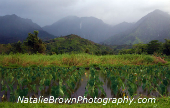 On November 19th, three days after Kauai pushed legislation that would increase regulations of biotech companies, the Hawaii County Council passed a bill that bans biotech companies from operating and prohibits new GMOs on the Big Island (except for the papaya industry). While Mayor Kenoi has until November 29th to veto the bill, this is a big step forward in the eyes of many on the Big Island.
On November 19th, three days after Kauai pushed legislation that would increase regulations of biotech companies, the Hawaii County Council passed a bill that bans biotech companies from operating and prohibits new GMOs on the Big Island (except for the papaya industry). While Mayor Kenoi has until November 29th to veto the bill, this is a big step forward in the eyes of many on the Big Island.
Currently, 90% of corn and 95% of soy grown in the United States is genetically modified, which the FDA does not require human health studies for before being released into the food supply. Critics and scientists argue that GMOs cause significant health effects, including diseases that are resistant to antibiotics, cancer, tumors, new allergens, and dangerous toxin level increases.
To learn more or get involved with these issues on Maui, read this in-depth Maui Weekly article or join the cause at GMO-Free Maui.
Fukushima Radiation
An ongoing concern without a ton of positive traction is the issue of radiation from Fukushima. Is it really at too low of levels to be a concern? Is the government trying to cover up how big of an issue it really is? What are the short and long term effects of this accident? There are lots of speculations out there without a ton of answers.
Read this much more thorough article for a closer look at all the concerns and information on what Maui (and the world) can expect and do about it.
Take a look at Maui’s Environmental Heroes of 2013 and read about the residents who dedicate themselves to preserving the life and beauty that make Maui a special place for so many.
Sources:
https://www.mauiweekly.com/page/content.detail/id/509108/Cane-Burning–Wastewater—Axis-Deer.html
https://mauinow.com/2012/03/05/irene-bowie-a-water-person-with-clout
https://mauisierraclub.org/county-sued-over-lahaina-injection-wells/
https://www.causes.com/campaigns/36085-stop-burning-sugar-cane-fields-in-maui/description
https://www.huffingtonpost.com/2013/11/19/big-island-bans-gmo_n_4305729.html

